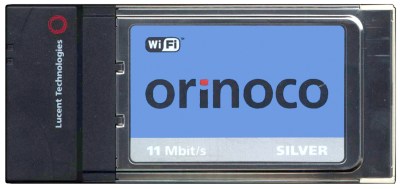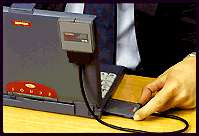While our collective minds have been turned towards the global pandemic it’s refreshing to hear that in some quarters life has continued, and events that would have made the news in more normal times have continued to take place while they have been replaced in coverage by more urgent considerations.
In the last few weeks there has been a piece of routine American bureaucracy that flew under the radar but which will have a significant effect on global technology; the United States’ Federal Communication Commission first proposed, then ratified, the allocation of an extra 1200 MHz of spectrum in the 6 GHz band to ISM usage. This allocation process is likely to be repeated by other regions worldwide, freeing up another significant piece of spectrum for unlicensed usage.
In practice this means that there will be a whole new set of WiFi channels created, and we’ll all have a little more spectrum to play around with, so it’s worth examining in a little more detail.
We Owe WiFi To The Microwave Oven

The dry description of an ISM band, or to use its full terminology, industrial, scientific and medical, conceals a lengthy history and a load of unexpected frequency allocations and uses for the spectrum most of us simply associate only with wireless networking and maybe a few extra protocols such as LoRa or UHF remote control.
Their history goes back as far as the mid 20th century when they were set aside by the International Telecommunication Union as frequency allocations in which non-communication applications for radio could be pursued.
A particular application was to be RF heating, and the popular 2.4 GHz band first made an appearance with the brand-new technology of microwave ovens, which were in turn derived from wartime work on radar. Indeed a Raytheon employee invented a popular cooking gadget.
There were an array of different frequencies reserved as ISM bands, ranging from the HF bands through to the sub-millimetre microwaves, even though (or maybe because) the technology barely existed to make use of those higher frequencies at the time. Aside from microwave ovens, devices using the ISM bands found their way into the hands of consumer through the first generation of cordless home telephones, and in radio-controlled toys and models. There was a time when owning a model plane, car, or even fighting robot, meant also having a pack of crystals for each of the individual channels (usually 27 MHz or 40 MHz) in use.

The turning point that led to the WiFi networks we have today came in 1985, when the FCC relaxed the rules to allow unlicensed use of the ISM bands within a set of guidelines, and in particular their use for spread-spectrum communication devices. After the development of the technology through a series of proprietary products, by the 1990s what would become the 802.11 series of standards appeared, and by the end of the decade everyone wanted a Lucent Orinoco PCMCIA card in their laptop.
We now have an array of WiFi channels across the 2.4 GHz and 5 GHz bands, and while the former is so congested as to have become degraded in some built-up areas, the latter has now become the well-used band of choice. The expansion in numbers of connected devices coupled with the explosion in IoT devices can only increase demand for wireless bandwidth, so the extra new space in the 6 GHz band can only be welcome.
Why Do We Have Wireless Networks We Don’t Use?

Before rejoicing too much over the new allocation, it’s worth taking a look for a minute at the alternatives. The 2.4 GHz and 5 GHz bands are not the only ones in which consumer wireless networking has been deployed, so why can’t those other bands take up some of the slack? The answer lies in a complex combination of market forces and competing technologies: A promising product can fade into obscurity simply by arriving too early before the market has a need for it, or too late after the market has moved on.
DECT is an example of the former, while we know it today as a digital cordless phone standard it possesses all the characteristics of a 3G cellphone network, including a data channel. Sadly, it arrived in the early 1990s when mobile computing users had little need for a wireless network, so that side of its operation never saw significant use. Meanwhile 802.11ah is a WiFi standard for the 900 MHz ISM band that offers extended range that you might expect to be everywhere, but its late arrival on the scene caused it to be supplanted by other technologies. 802.11ah chipsets and modules are produced by some manufacturers, and given the right market conditions could be as plentiful as those for 2.4 GHz WiFi or LoRa, but due to low take-up they remain extremely rare.
The 24 extra 6 GHz channels that will be provided by the 802.11ax standard will therefore be a much needed addition to the existing allocations. But merely because they are there does not necessarily mean that they will see significant use. Just like the aforementioned 802.11ah it is possible that the market may have taken a different course by the time enough supported devices have been shipped to allow consumers to use it.
One of the promises of 5G mobile telephones, for example, is a future in which there is universal high speed connectivity. Will this remove the pressing need for extra WiFi in years to come? Or how about the upcoming 802.11bb so-called LiFi standard for light-based networking? Will a much cheaper LED light bulb on every ceiling make a WiFi router seem archaic? One thing is for certain, if you thought wireless networking was a done deal, you’re in for a surprise over the next few years.
via Radio Hacks – Hackaday https://ift.tt/35FkMwd
No comments:
Post a Comment